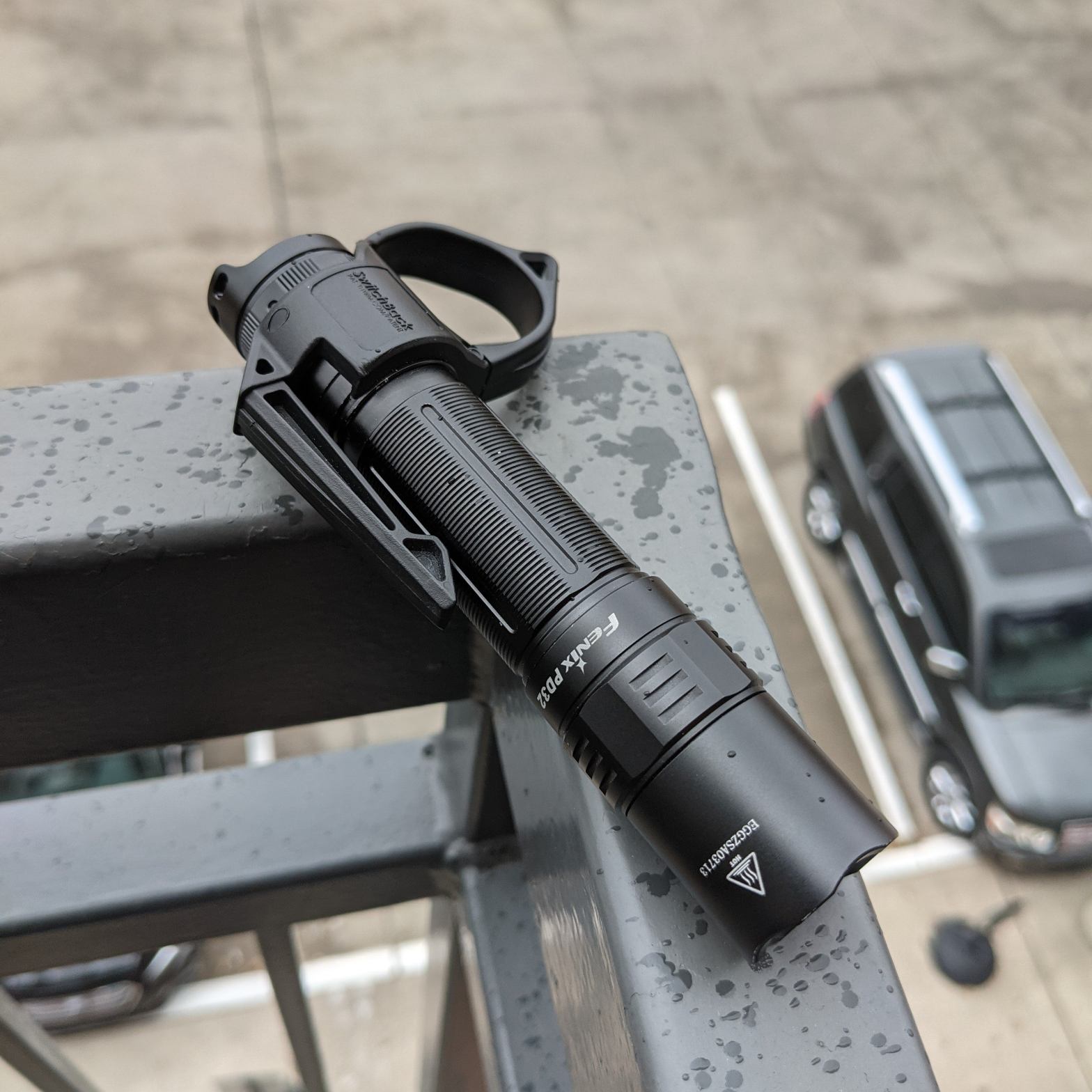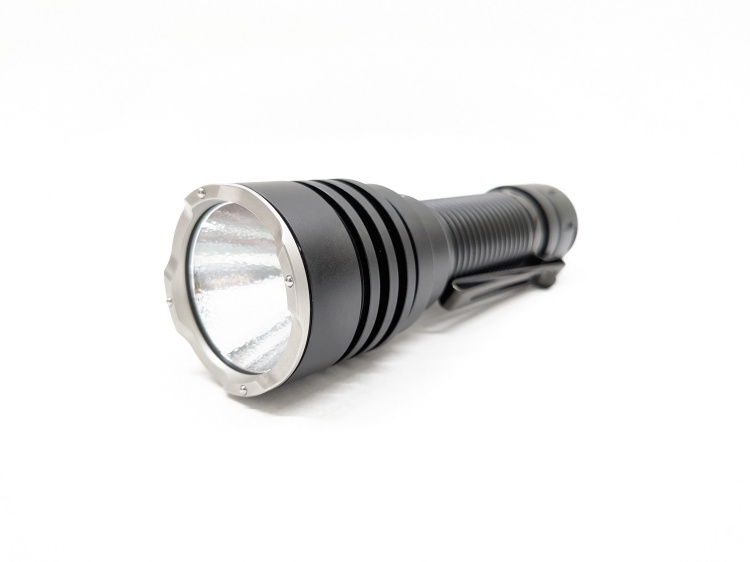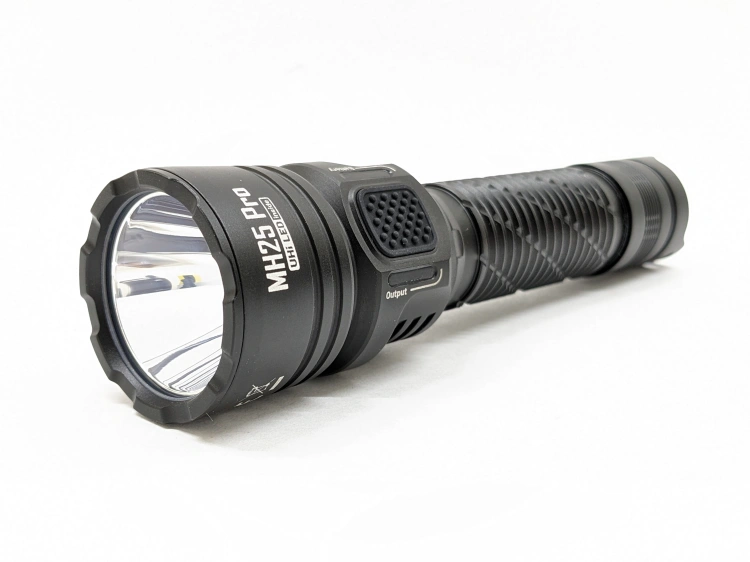This content originally appeared on Reddit on March 14th, 2021.
Why is this light interesting?
There are tons of lights on the market you could buy, but what makes this one special? It has a two stage electronic tailswitch with a cool UI and it’s very throwy for its size. That tailswitch gives it some extra functionality you don’t get from most tailswitch lights, and it’s the furthest throwing light in its class.
The boring stuff
Official product page, Amazon listing
Price at time of writing: $60. Official specs from Fenix’s website:

What comes in the box?
What comes in the box?

Size Comparison

The switch & UI

This light has a really unique two stage tailswitch. The first stage has a lot of travel all the way from when nothing is touching the switch all the way to the “wall” before the second stage. When you push the switch all the way down you can feel a distinct walk before the second stage. Pushing through that wall gets you to the second stage. It feels just like an electronic tailswitch light you might find on a Noctigon KR1/KR4 except with a rubber switch boot over it. The second stage is very quiet. It’s not technically silent but you’d be hard pressed to hear it unless you were to hold it next to your ear. It’s a good switch and I like it. My only critique is that I wish the first stage required more pressure. It’s a little too easy to press and occasionally it will blink on in my pocket for a second when I sit down or change modes if I bump the switch lightly.
UI Table
| State | Action | Result |
|---|---|---|
| off | half press | momentary on (memorized mode) |
| off | full press | on (memorized mode) |
| on | half press | cycle mode (low-med-high) |
| on | full press | off |
| any | hold full press | strobe |
| strobe | half press | return to memorized mode |
| strobe | full press | off |
The Beam

This thing throws for how small it is. I believe the 39,000cd rating, which is crazy coming from a 1″ light. I guess that just goes to show what an Osram CSLPM1.TG emitter and a deep, smooth reflector can do.
The beam is honestly really nice. No artifacts in the hotspot or spill. No tint shift. Very neutral tint. It’s cool white which isn’t my favorite but I’ll happily take it in exchange for the awesome throw. There’s just a hint of flower petaling in the corona like on my Noctigon KR1 W1, but it’s much less pronounced and it’s only two petals instead of 4 since the emitter die is a rectangle instead of a square.
I really like the beam. The hotspot is wide enough that it’s useful but it still throws impressively far even on low. The spill is nice and usable. Both are very defined. It’s a great beam for this style of light. More beamshots.
Clip & Switchback


Mine has been modified slightly so the arms don’t fill the clip slot quite as well as an unmodified one would. This is my favorite bent steel clip by far and it’s a substantial improvement from the stock clip.

As you can see from all the photos, I ultimately elected to install the Thyrm Switchback 2.0 on mine. I thought it would work out of the box, but unfortunately it took some work to get it to fit right and not spin around freely. The spacer washer included with the switchback is just a bit too thick. I didn’t want to modify mine so I bought some 3/8″ washers from home depot to work with. I took one and used a file to thin it down to about 1mm (the included washer is 1.5mm). That was just the right thickness to maintain electrical contact between the tailcap and body tube and to pinch the switchback in place between the tailcap and body tube. Modifying a steel washer was a pain but it should be a lot easier to do with the included aluminum washer. The switchback is just a hair taller than the tailcao of the light so it won’t tailstand reliably with the switchback installed, but some quick flattening in the switchback with sandpaper would solve that issue. It tailstands just fine without the switchback. This light won’t be going on my list of the best lights to use with the switchback because it requires some modification, but once it’s fitted it works really well with this light. I definitely intend to keep it installed.
Modes
This light has three normal modes: low (30lm), medium (350lm), and high (1200lm). They’re fine overall, but there are a couple things I’d change on the PD32 V3. The spacing is a bit weird. There’s a huge brightness jump from low to medium, but the jump from medium to high is not very significant. I think a ~200lm medium mode would make a lot more sense. Secondly, give us a sublumen mode. The 30 lumen low mode is way too bright. I found myself wanting to have a different light on my nightstand every night for getting up and walking to the bathroom. I also went to a movie during my testing of this light and I swapped it out for my D4V2 for that afternoon because 30lm is way too bright just to make sure you don’t trip over someone’s purse when you get up to go to the bathroom during a movie. Lack of a sublumen mode is honestly my biggest issue with this light.
Power

The PD32 V2 runs off one 18650 cell. It has physical reverse polarity protection (boo), meaning it only works with button too cells out of the box.

Fortunately, I bought some 3x8mm magnets from a local home improvement store and I just stick one of them to the positive end of a flat too cell to act like a button and that works great. As you can see, I also added a layer of painter’s tape to my Samsung 30Q’s to keep them from rattling inside the light. It’s not a problem, just something that bugs me a little. Button top/protected cells should fit great because they come with an extra wrap on the outside.
But what about low voltage? I tested with a drained cell and found that the light has both a low voltage warning and low voltage protection (lvp). The warning kicked in at about 3.5v and made the light automatically step down from high to medium and then to low shortly after it was turned on and it would continue to do that every time I reset it to high. At around 2.85V it would no longer stay on. I could still get it to produce light by holding down the switch but it was sporadic and blinky. That’s good enough for me to call it low voltage protection and I’m pretty happy with it. It’s worth noting that after my runtime test, the light had turned off and the cell was at 2.95v. In a PD32 V3 I would like to see springs on both ends so the light can work with flag top cells. This would also solve the very minor issue of flickering when you set the light down on a surface to tailstand it.
Runtime


Brightness looks really stable after stepdown. Assuming the 1200lm turbo rating is accurate, it looks like you get a solid two hours or so of a very stable 400lm. Then there’s a little brightness spike before a smooth stepdown, followed by a hard stepdown to low mode where it stays for about 200 more minutes. Then low voltage protection kicks in and the light shuts off. Runtime after stepdowns is pleasantly well regulated. These graphs were generated by the Ceiling Bounce app on my phone being left in a closet with the flashlight for awhile, so the choppiness is probably just my phone’s light sensor being wonky.
Conclusion
I really like this light. I love the beam profile. I like that the tail switch allows you to use momentary without changing modes, but doesn’t require a separate side switch for mode changes. The inclusion and implementation of LVP is very welcome. Its sized very well and I really like that it doesn’t have any rubber flap covering a charging port. I don’t like the lack of moonlight mode or support for flat top batteries. Overall I give it a 4 out of 5.



